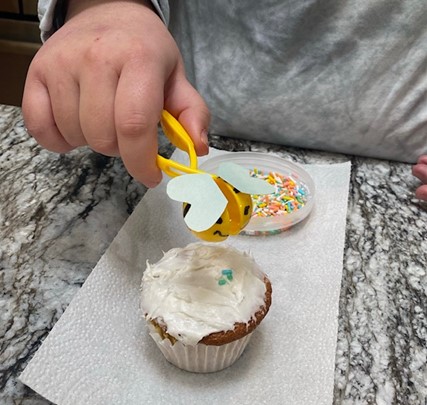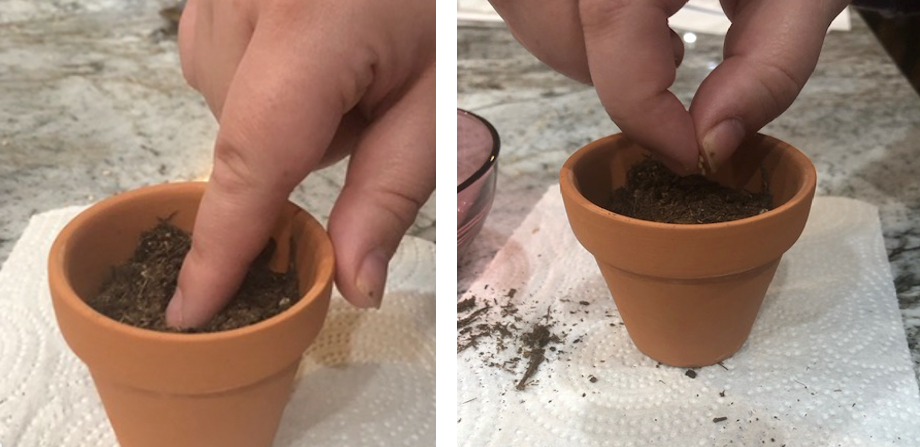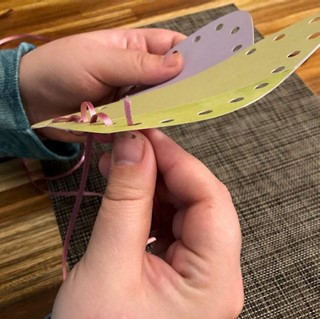Written By: Robyn Otty, OTD, OTR/L, BCPR, FAOTA
 Springtime is an excellent time to introduce fun and engaging projects that encourage fine motor and visual-spatial skill development. Children engaging in such activities can easily forget and become distracted by the pure enjoyment when completing such activities; they don’t realize they are creating new neural pathways!
Springtime is an excellent time to introduce fun and engaging projects that encourage fine motor and visual-spatial skill development. Children engaging in such activities can easily forget and become distracted by the pure enjoyment when completing such activities; they don’t realize they are creating new neural pathways!
When provisioning activities to develop desired outcomes, the use of theory to guide assessment and intervention is paramount. Theory can help frame and predict desired outcomes, and most importantly, enhance occupational performance. Once a theory has been chosen, different approaches can then be applied to ensure the treatment plan has the best support to encourage skills and goal achievement.
Neuroplasticity Approach: The neuroplastic approach can be applied to encourage skill development and lead to eventual motor permanency. As such, the child gaining and practicing new skills will influence the fluidity of performance and greater confidence with more challenging tasks.
Evaluating the fine motor task is imperative to skill acquisition. Presenting an activity that allows for success with the “just right” challenge will encourage confidence while making new neural connections. Additionally, monitoring the acquisition of gained skills while creating an environment to randomly practice through different contexts, encourages permanent neural connections. Therefore, practice with varied conditions is the key to achieving the desired motor outcomes long-term (Dayan & Cohen, 2011; King et al. 2019).
Cognitive Approach: Another approach that is rooted in the literature is the use of the Cognitive Orientation to Daily Occupation (CO-OP). This cognitive-based approach supports occupation participation as an essential core feature. Rather than the therapist leading the activity performance, the child presents problem-solving strategies to improve performance. Since success does not happen after the first trial, the child learns through self-correction of errors after each subsequent attempt. The CO-OP model also influences a childʻs confidence and self-esteem which can support participation of new and challenging activities (Anderson et al. 2018).
Busy Bees:
Decorate tongs in the form of a bee. Have cups of items that represent the ʻpollenʻ to ʻpollinateʻ. The picture shows the bee to ‘pollinate’ cupcakes (yummy)!
Make it Challenging by:
– Use smaller items or lightweight items to scoop.
– Create more tension on the tongs with rubber bands
– Reduce the reliance of additional fingers
– Reduce the time to complete the task (i.e. race with others)
Planting Spring Flowers:
The seeding aspect, coupled with the tactile input of the soil encourages dexterity awareness.
Make it Challenging by:
– Use smaller seeds to plant.
– Pushing the seed through wet soil for tactile tolerance.
– Reduce the reliance of additional fingers (middle finger) when pushing the seed into the dirt.
Lacing Spring Shapes:
Use pre-cut shapes and hole punch to create Spring-specific shapes. This bimanual task encourages stabilization while performing a refined pincer and shift to push the string or lace through the hole.
Make it Challenging by:
– Use smaller items or lightweight items to scoop.
– Create more tension on the tongs with rubber bands
– Reduce the reliance of additional fingers
– Reduce the time to complete the task (i.e. race with others)
Want to learn more about all things fine motor? Watch my Summit On-Demand course, Improving Visual and Fine-Motor Skills Using Neuroplasticity, where we explore practical and engaging opportunities to create sessions that children will enjoy, which produce measurable results.
Explore online continuing education courses from Robyn below:
Foundations of Applying Evidence-Based Practice
Improving Visual and Fine-Motor Skills Using Neuroplasticity
Integration of Persistent Reflexes
Visit summit-education.com for more information.
References:
Anderson, L., Wilson, J., & Carmichael, K. (2018). Implementing the cognitive orientation to daily occupational performance (CO-OP) approach in a group format with children living with motor coordination difficulties. Australian Occupational Therapy Journal, 65(4), 295-305. https://doi-org.hpu.idm.oclc.org/10.1111/1440-1630.12479
Dayan, E., & Cohen, L.G. (2011). Neuron, 72(3), 443-454. http://dx.doi.org/10.1016/j.neuron.2011.10.008
King, B. R., Dolfen, N., Renard, Z., Swinnen, S. P., & Albouy, G. (2019). Schema and motor-memory consolidation. Psychological Science, 30(7), 963-978. https://doi-org.hpu.idm.oclc.org/10.1177/0956797619847164
About Summit Professional Education
Summit equips therapists with better continuing education courses that provide CEUs while impacting patient outcomes. Find high-quality on-demand CE along with the largest offering of live options — including live webinars, live streams, and in-person courses. Want to deep dive on a topic? Summit offers hundreds of 6-hour courses for the most in-depth learning!



